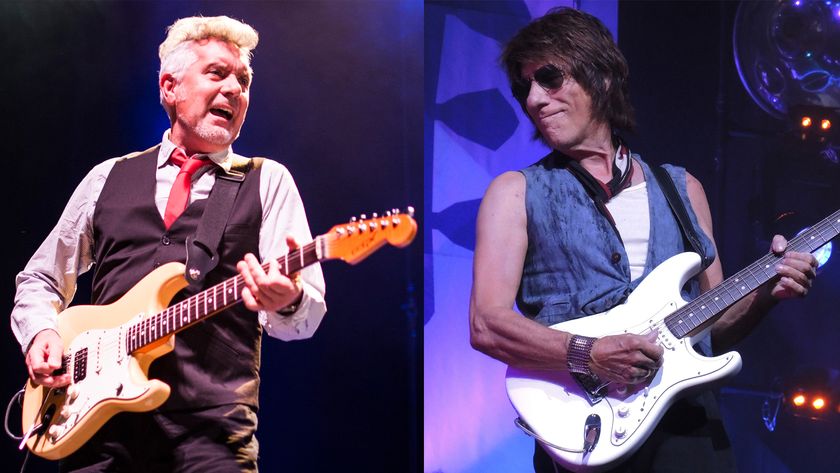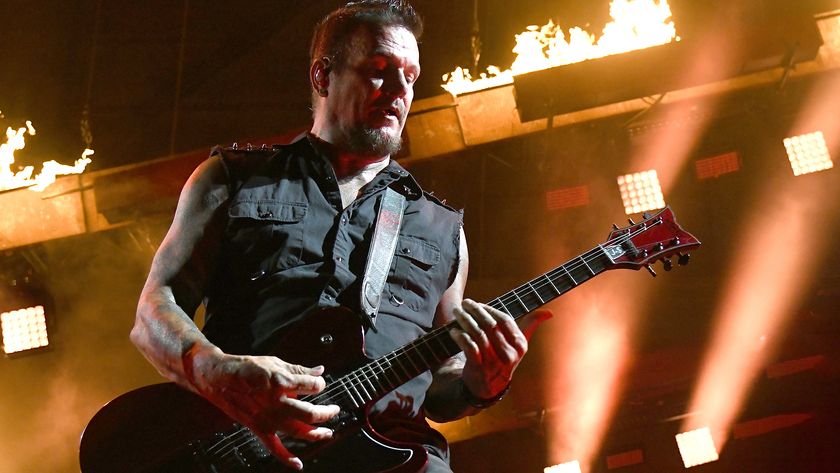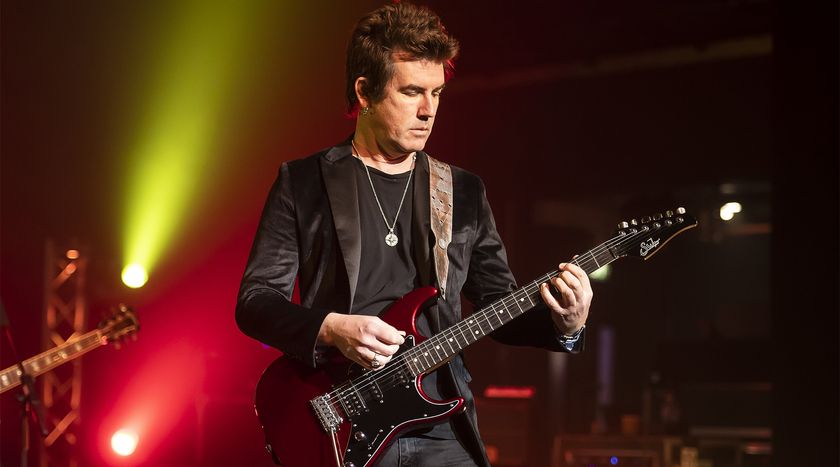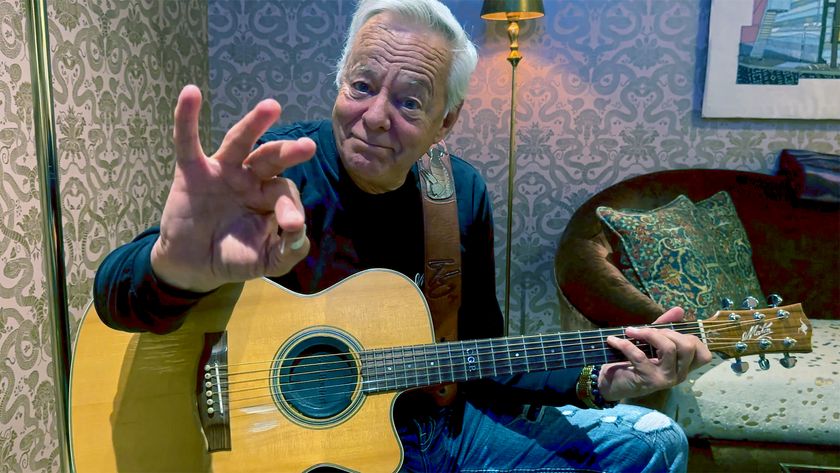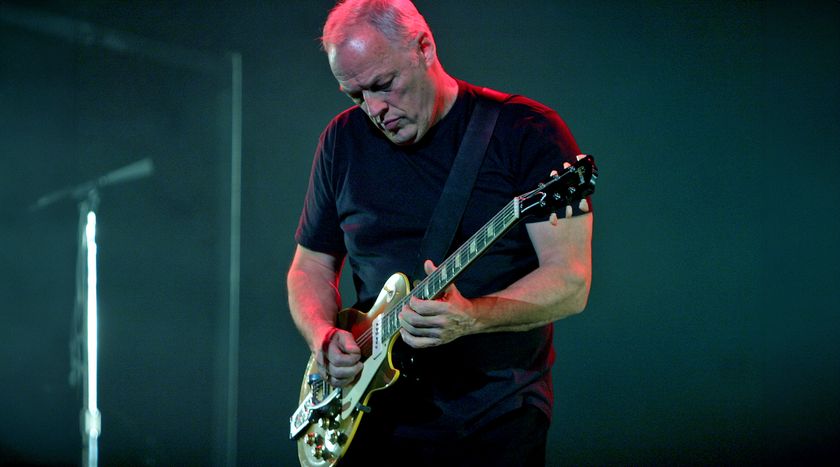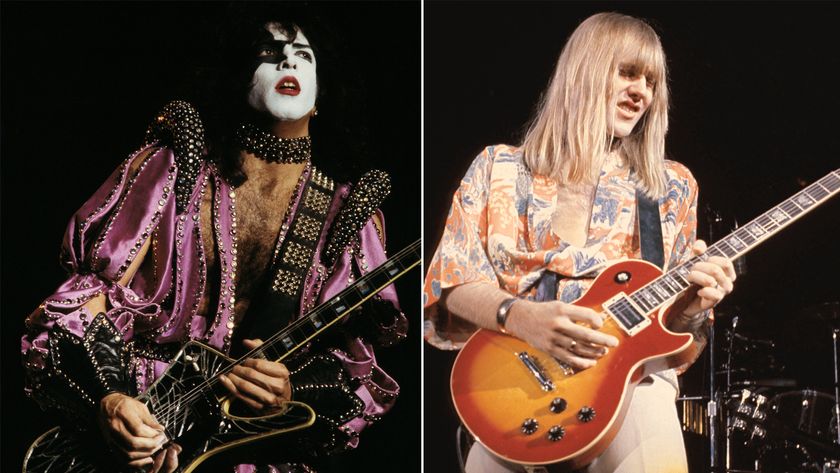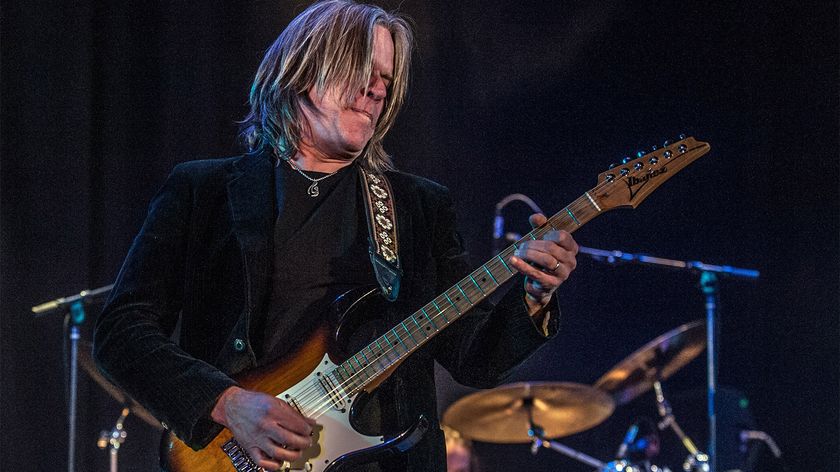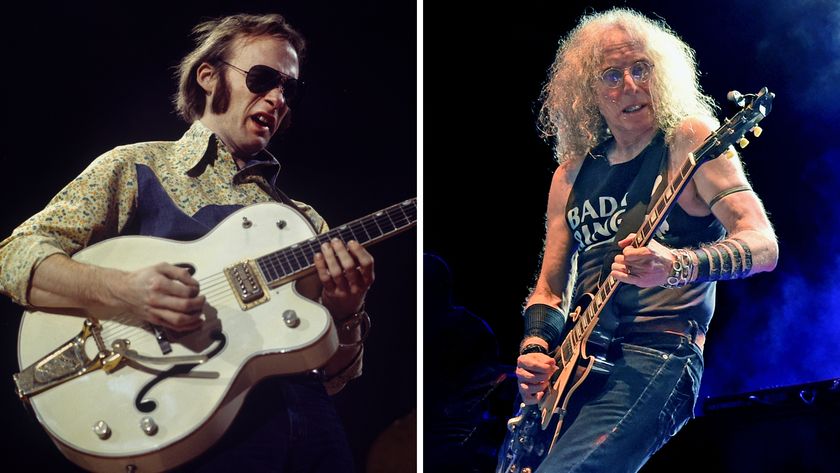“Every guitarist should understand the drums. It's important to know where the kick and snare should land to complement your riffs.” Dave Grohl on the making of the Foo Fighters' There Is Nothing Left To Lose
Back in late 1999, the Foo Fighters were down to a three-piece, with Dave Grohl playing all the guitars on third album, There Is Nothing Left To Lose, and about to unveil a new guitarist, Chris Shiflett…
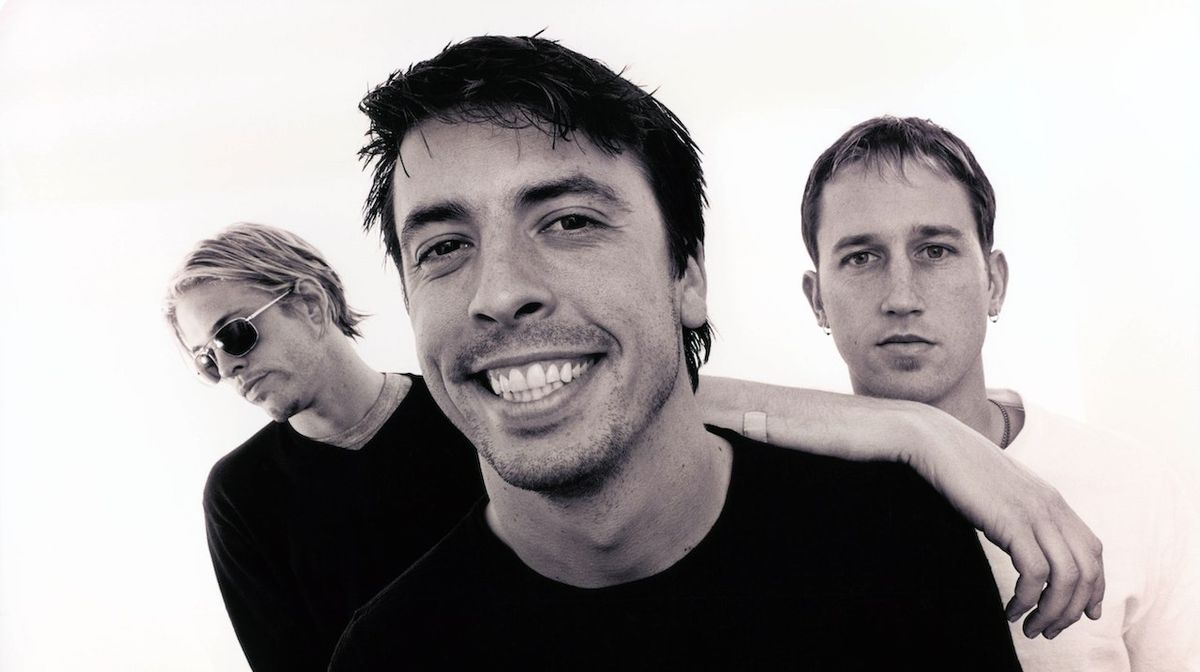
Guitar Player interviewed Dave Grohl for our January 2000 issue (the interview itself happened in October, 1999, when the Foo Fighters were in Sydney for the beginning of an Australian tour). Back then, it was still a novelty to see Grohl as frontman and guitar player, recovering from the death of Kurt Cobain to carve out something new. 20-plus years later, he’s one of rock’s elder statesmen and recognised as one of our great performers. 2023’s But Here We Are was a powerful collection of rock songs, written in the wake of Taylor Hawkins’ death.
After an intense but worthwhile experience making their previous album -- where frontperson Dave Grohl learned the true meaning of spot-on recording -- the Foo Fighters opted for a messier approach on There's Nothing Left to Lose. Instead of taking days to get a sound and enduring 30 takes for one guitar track, Grohl and producer Adam Kasper went for a slightly unkempt, but nonetheless dynamic, melodic, and tonally diverse record that emphasized feel over precision.
In addition, Grohl -- who played all the guitar parts on Nothing Left -- abandoned the "razor-blade distortion" that has characterized much of 90s rock. Most of the album's overdrive tones were produced the old-fashioned way -- by selecting a good guitar/amp combo and cranking up the volume. Three albums on from being Nirvana's drummer to his role as singer and guitarist for the Foo Fighters, Grohl has absorbed two distinct recording philosophies, and has established himself as an impassioned songwriter and an innovative player.
The easy-going sessions for There's Nothing Left to Lose were certainly less stressful than recent life outside the studio. First, Grohl and bandmates Nate Mendel (bass) and Taylor Hawkins (drums) had to find a replacement to fill the co-guitarist spot vacated first by Pat Smear, and then by Franz Stahl. Before going on tour to support the new record, the band had to audition 35 players, with ex-No Use for a Name guitarist Chris Shiflett ultimately winning the gig.
What was the fundamental guitar-sound recipe for the new album?
We focused on not using too many distortion pedals, and went for a cleaner, fatter, more natural overdrive. We used a Vox AC30 for pretty much everything on the record, tweaking the sound so that it broke up nicely when played loud. Sometimes we'd double a track using an old Pro Co Rat, and then hard-pan the parts so that a super-distorted guitar was in the left channel and a grindy guitar was in the right. Then we'd sprinkle in lots of clean guitar overdubs.
Why did you decide to avoid fuzz boxes?
It seems the current definition of big and heavy is really bright, tinny, razor-blade distortion. Big and heavy used to be, like, Sunn amps and a guitar set to the rhythm pickup so that the sustain held on for two minutes. We wanted to move back to that huge, warm, sludgy sound and get something a little more garagey -- not something so well-produced and pristine. So rather than play through a distortion pedal and an amp with its volume at 5, we wouldn't use a pedal at all. We cranked up the amp to 10 so that it sounded like the speakers were screwed up. I enjoy the sound of a guitar breaking up because the speaker is getting its ass kicked. I even like listening to music in my truck because my car speakers are ruined -- everything sounds a little bit distorted, and I love it. If I listen to the same album on a good stereo system, it doesn't sound as good to me.
Is there any trick to recording good, natural guitar sounds?
The best way to get a natural guitar sound is to eliminate all pedals and find an amp that has a lot of range. With an AC30, for example, you can go clean, dirty, bright, or fat. It's just the amplifier and the guitar -- the most basic combination. I know the [Gibson] Trini Lopez and the Vox is going to have one sound, and the Telecaster and the Twin Reverb is going to have another. Getting basic guitar sounds should be that easy. As far as miking the amps, we used a Shure SM57. That's usually the mic they use on the amps when you play live, so why not use it in the studio as well?
Do you spend a lot of time dialing in guitar tones in the studio?
For the most part, Adam and I didn't spend more than ten minutes getting a sound. We'd just plug in and say, "Throw up a mic, and let's do it!" Adam is so good and quick that he doesn't need to do any measuring, calculating, or science -- he can just hear it. But he has worked with producers who spend three days getting a rhythm guitar sound, and that would make me go postal.
The whole idea with this record was to put up the mics and record, record, record. We didn't want to spend hours and hours laboring over where the knobs were set on the last take and things like that. We'd do a take and walk away, bump into the mic, turn the amp off, bump into the knobs, come back to finish the guitar track, and not even really worry about it. In fact, if you listen closely, you'll hear that every song starts with a guitar riff that has this jangly tube rattling in the background. That's the Vox AC30. We kept promising we'd replace the tube, but we never did. And now I like that sound a lot.
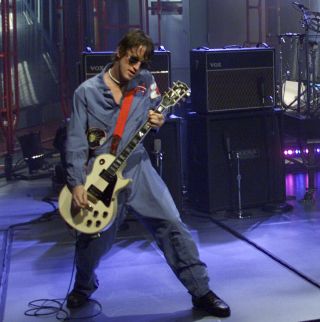
"We had never auditioned a guitar player before," says Grohl. "The other guitarists that were in the band, Pat Smear and Franz Stahl, were just friends we asked to come play. We had the candidates learn four songs from an audition tape. Off The Ground and Everlong are pretty basic rockers, but A320 and Aurora have lots of guitar parts going at the same time, so it was interesting to see which parts each guitarist would choose to play. Some people just learned one of the three parts, and others expected me to play everything. But Chris [Shiflett] learned all of the parts and figured out -- without me telling him -- which parts worked best in which places, since all the parts can't be played at once. Chris proved that he was good at knowing which spaces to fill and which to leave open -- that got him the gig.
"Chris can do almost anything. He can be just as dirty and sloppy as Pat, or he can be as precise as Franz. He definitely plays really tight, but because of his hard-core, punk rock background, he also knows when things should be messed up. He really gets into it when he plays, and you can tell when something's building to a climax -- he kind of goes off."
How would you typically set the AC30's tone knobs?
We had the bass at 8 and the treble at 6 or 7. I don't know enough about amps and guitars to come up with any solid recipe. I just tweak it until it sounds good.
Were you out in the studio when you tracked your parts?
No, I played guitar in the control room -- not next to my amp. I think the best way to get a sound is when the producer and the guitarist are working together to hear what's really going down on tape.
Is it harder getting guitar tones or drum sounds in the studio?
I'm pretty laid back about recording guitar. I get a good amp, find a decent sound, put up a decent microphone, and I'm halfway there. It's pretty easy to translate a good guitar sound to tape. I had more problems getting great drum sounds because of the resonances and rings.
How has your approach to recording guitars changed since the Foo Fighters' first album?
On the self-titled first album, we didn't do more than two takes for anything! Things went the opposite direction on The Colour and the Shape because we tried to lock in all the guitar parts as tight as we could. On Nothing Left, we kind of returned to the spirit of the first record, and a lot of the scratch-guitar parts wound up on the final mixes. It just sounded fuller when there were lots of little imperfections going on here and there -- pick scratches and things like the guitar on the left channel being a little lazier than the one on the right.
Was it difficult shifting gears from the freer process of the first album to the more intense process of the second?
I learned more from Gil Norton -- who produced The Colour and the Shape -- than anyone else. That recording session was a lesson in patience. We wanted to make a tight, hard-rock record, and I always thought my guitar playing was pretty tight, but Gil taught me the meaning of "spot-on." He tuned my ear a little bit, so now I can tell when a guitar part is really, really on.
What was it about the process that helped tune your ear?
Doing 30 takes in a row, trying to get things perfectly in sync. That was work, man! I had never experienced that level of precision before. It was a great lesson.
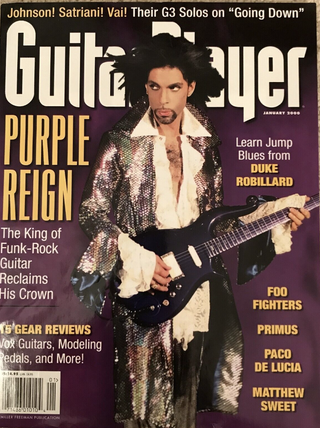
But did having to record 30 takes impact the feel of the tracks?
Somewhat. The object of that kind of recording is trying to get things perfectly placed. We wanted every strum to lock perfectly with the kick and snare. Everything was supposed to be as in-your-face as it could get. But on There's Nothing Left to Lose, we weren't concerned with that at all.
Are you still playing a Gibson RD Artist?
I didn't use it much on the record, but I pull it out live. RDs are awesome. It's like holding a kitchen table over your chest and having it scream like a jet airplane. I like that they're really heavy and can sound fat or bright. They're kind of nasty guitars -- played through a Boogie Rectifier, they sound completely insane.
Has your drumming influenced your guitar playing?
Definitely. Every guitar player should understand the drums, and every drummer should understand the guitar. If you're playing music that's based on guitar riffs, it's especially important to know where the kick and snare should land to complement your riffs. And drummers should learn everything they can about songwriting, so they can effectively move a song from one place to another -- whether it's from the verse to the chorus, or from an intro to a verse.
Did you learn anything about guitar from Kurt Cobain?
The biggest thing I've learned from working with other people is how to get interesting sounds, which pedals do what, and other really basic stuff. I can't pinpoint any one influence that has formed the way I play guitar. My biggest influence was probably my guitar teacher when I was ten years old -- which is kind of weird because I only took lessons for a year, and I quit because they were so boring.
Did you use any alternate tunings on There's Nothing Left to Lose?
On "Stacked Actors," the low-E string is tuned all the way down to A. "Headwires" is in dropped-D tuning, and "MIA" is dropped-D tuning with the B string tuned down to A. I came up with the "Stacked Actors" riff when I was asked to write some songs for Ozzy Osbourne six or eight months ago. I was trying to come up with riffs that I thought would sound cool -- Ozzy circa his "Crazy Train" era -- and I was just fooling around when I tuned the E down to A. But I loved how sludge-heavy the guitar sounded, and I decided to keep the riffs for myself.
How did you get the undulating tone on "Breakout"?
That's the Memory Man through the Vox. We tried to set the wave of the phase so that it was in sync with the rhythm of the song. I used the Trini Lopez for that -- the world's most beautiful guitar. The Trini sounds wonderful clean, and it sounds wonderful dirty. It's my favorite guitar -- it's next to me in my bed right now. I've never played a guitar as good. It's nice and punchy, and it breaks up beautifully when you plug into an AC30.
Is there an ideal tone setup for the Trini?
I usually just flip to the treble pickup and tweak the amp.
What about that shimmering clean tone on "Next Year"?
That's the Vox and the Trini Lopez. We tried to get a pretty nice clean sound on that, so we boosted the treble on the amp and kept the volume down so it wouldn't break up too much. To me, that song illustrates the classic sound of the Trini Lopez -- it's clean with just a slight touch of distortion.
"Headwires" is filled up with so many guitar parts, yet the mix doesn't sound cluttered.
Oh yeah -- Adam's good with that stuff. The main riff is an Explorer playing through the Memory Man and the Vox, and the harmonics were done with the same setup. The choruses are the Duo Jet running through a Rat and the Vox. The high, picking part in the middle eight is an SG through the Memory Man.
I'm always afraid someone is going to miss a part, but Adam knows where to place the parts in the mix. He has turned me into a huge fan of panning guitars hard left and hard right to avoid turning a song into one big fat wash. Also, when things are panned so that they seem to be wrapped around your head, all of a sudden it doesn't sound like the music is being performed in front of you -- it sounds like it's all around you. The expanded stereo dimension makes the song sound bigger.
Did digital editing play much of a role in building song arrangements and constructing sounds?
No, and I think that the struggle for perfection is the biggest problem with recording today. So much music lacks character, charisma, and personality because people are too concerned with making things as glossy and glittery as they can get. For example, Pro Tools and digital editing have almost destroyed the things that I loved about drummers from the '60s and '70s. The legendary drummers -- whether you're talking about Buddy Rich, Gene Krupa, John Bonham, or Keith Moon -- were famous for having their own feel, which meant they weren't perfect metronomes. It was nice to hear John Bonham's laziness or Keith Moon's sloppy aggression -- or even their drunken drum fills. That stuff sounded cool. The current focus on perfect metronomic time really detracts from the overall feel of a song.
This interview was originally published in Guitar Player magazine, January 2000
Get The Pick Newsletter
All the latest guitar news, interviews, lessons, reviews, deals and more, direct to your inbox!
Kyle Swenson currently works for The Washington Post. His first book, "Good Kids, Bad City: A Story of Race and Wrongful Conviction in America's Rust Belt" was published in 2019.

"Shredding is like talking a foreign language at 10 times the speed of sound. You can't remember anything." Don Felder reveals the unlikely influence behind his iconic guitar solo for the Eagles' “One of These Nights”

"Old-school guitar players can play beautiful solos. But sometimes they’re not so innovative with the actual sound.” Steven Wilson redefines the modern guitar solo on 'The Overview' by putting tone first
